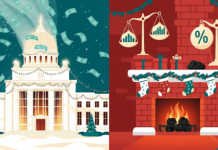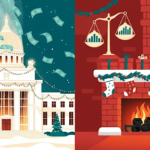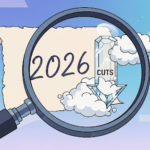Nine months of patience may finally pay off for investors
After nine months of relative quiet, the Federal Reserve might finally be ready to pull the trigger on a rate cut this September. Investors have already started pricing in an 85% chance of a 25 basis point reduction, and history is offering a comforting precedent. In 10 of the past 11 cases where the Fed paused for five to twelve months before easing again, the S&P 500 posted gains over the following year.
That’s not just an interesting footnote. It may be the ignition for a broader and more inclusive rally. From large-cap tech to small-cap stocks, lower rates could push investors further out on the risk curve in search of yield. But with some voices inside the Fed still urging caution, it’s far from a done deal.
Today’s issue unpacks what this setup means for equities, sectors poised to benefit, and why “euphoria” might not be as irrational as it sounds.
This Week I Learned…
The Psychology of the Pause
This week I learned about the subtle power of the waiting game — particularly how the duration of Federal Reserve pauses can create powerful investor momentum. It turns out, when the Fed pauses rate changes for anywhere between five and twelve months before making a cut, the market doesn’t just breathe a sigh of relief. It often rallies.
Why? History suggests it’s not just about economics, but sentiment. A pause long enough to suggest economic conditions have stabilized, but not so long as to signal trouble, creates a “goldilocks” scenario. Investors see enough caution from the Fed to inspire confidence, but not panic. It sends a quiet message: “Things are getting better, and we’re here to help.”
This time around, that message may be reinforced by signs of labor market softness, prompting Powell to shift his tone toward “dovish with data dependency.” That subtle pivot from if to how much is already moving markets.
Understanding these nuanced windows is a reminder that markets run as much on psychology and timing as on spreadsheets. And if the Fed cuts next month, it won’t just be about lowering rates. It’ll be about unlocking expectations that have been pent-up for most of the year.
The Fun Corner
Jerome’s Comedy Clock
Here’s a little monetary trivia for your next portfolio review: The average time between Fed rate cuts since 1980 is just under 7 months but the biggest post-cut rallies came after longer pauses.
So next time someone says the Fed is moving too slowly, remind them that their best rallies often come when they seem to be dragging their feet. Maybe they’re not slow. Maybe they’re just letting the punch bowl ferment.
And if you’re wondering whether Fed Chair Jerome Powell checks the stock market before he speaks, just remember: The Dow hit a record the same day he shifted tone on jobs data. Coincidence? Maybe. But it’s definitely suspiciously punctual.
Why the September Fed Cut Could Be a Market Multiplier
The Federal Reserve may be about to end its nine-month pause in rate adjustments, and the timing could not be more consequential. With September approaching fast, markets are now not just expecting a rate cut. They’re betting on it.
Traders are pricing in an 85 percent chance of a 25 basis point cut, and analysts say the implications could be market-wide. Historically, when the Fed waits several months before cutting again, the market tends to rally. In fact, the S&P 500 has gained in 10 out of 11 such scenarios over the past decades.
But the potential effects go beyond just the big benchmarks. A Fed cut would reduce borrowing costs and could push investors toward smaller and more leveraged companies. That explains why the Russell 2000 outpaced other indices last week, jumping nearly 4 percent in a single day.
The labor market is the current focal point for Fed concern, and with inflation somewhat contained, policymakers are beginning to hint that maintaining current rate levels could risk slowing the economy more than intended. Powell’s latest comments signaled that concern. A meaningful shift from earlier hawkish messaging.
Yet not everyone is on board. Cleveland Fed President Beth Hammack is already voicing dissent, reminding markets that internal Fed consensus is far from locked in. This leaves room for surprises, especially with key data releases still to come in early September.
Still, short of a shock inflation report, a rate cut now looks likely. If that happens, markets may not just continue their upward trajectory. They could expand it. The rally, until now led by large-cap tech, could broaden across sectors and asset classes. That kind of momentum shift could shape Q4 and beyond.
The Last Say
Is the Market Getting Ahead of Itself… or Right on Time?
After months of cautious optimism and waiting, markets are now clearly pricing in action. With Powell signaling concern over jobs and multiple data points pointing toward a need to ease, September is lining up to be a pivotal month. Whether the Fed cuts once or twice this year, the long pause has worked its magic in calming markets and laying the groundwork for a broader rally.
Yet history reminds us that enthusiasm can turn quickly if data surprises. And while 10 out of 11 past similar pauses led to gains, the one outlier should keep us grounded.
Still, sentiment matters. And right now, investor psychology is shifting from cautious to confident. As the data trickles in, expect more discussions about the shape and size of cuts rather than their mere existence.
The key risk now? Overconfidence. Markets are already reacting as if the September cut is a certainty, when in truth, a single sharp inflation reading could delay or dilute that outcome.
Keep your eyes on the labor reports and inflation gauges in the coming weeks. Because while history leans bullish, data still holds the final vote.






















